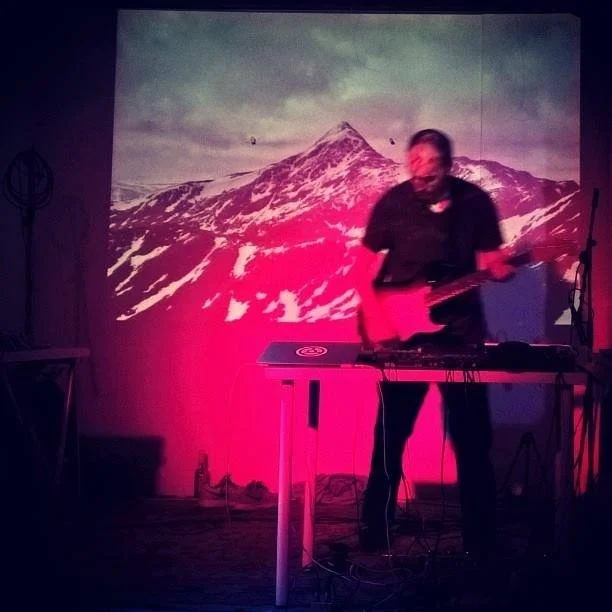Q&A by Artists
Dirk Markham: Where does the name Q3A come from? What does the Q3 stand for?
It’s good to have the chance to talk about that in this context. Growing up in a socialist East Berlin Plattenbau, architecture has always played an important role for us. That’s why our first two album duologies under the alias CEEYS contained allusions to and, above all, photos of this, in technical terms, so-called “brutalist” building type.
For us they were not only the grey monotone of geometric shapes, but also the location of our first musical exercises. The daily attempt to convince our dear neighbours through the paper-thin Querwände (cross walls) of our unearthly talent failed – understandably, looking back – such that they weren’t always able to muster understanding for our regular and irregular scale cascades and as a kind of spontaneous opinionating hammered unrhythmically on the radiator pipes. On the whole they probably remained interested.
By the way, our last CEEYS duology “Hausmusik” and the rework “Musikhaus” seizes specifically upon the meaning of our old flat and place of training. To that end, the albums, one after the other, first wander across the complete spectrum of our acoustic repertoire in order to afterward make room for their reworking in an electronic fashion – from the quiet house or chamber music in our “own four walls” to a house full of music.
Q3A is the architectural shorthand for the first three, four and five storey series of pre-fab buildings in the GDR in the 50s and 60s of the last century. Simply put, it means: Querwandtyp, Number 3, Variant A… And this is where everything began with cello and piano… Other series included the QP and also the QX…
Together with the label Oscarson we released two special 7-inch EPs dedicated to Q3A and QP. These again take up the theme and are designed to explore our work as a long-term collaborative duo in an original way – from solo and duo pieces to a “hidden track” in each that only appears by overlaying the music from the A and B sides.
How do you balance your own artistic career with the role as curator? Is there any conflict?
Well, there’s potential for conflict just on the basis of time. Especially with Q3A, we wanted to give ourselves the necessary space and time to familiarise ourselves with the creative process of our colleagues. Only in this way can there be new impulses for us on and off the stage. This is not always easy but should go hand in hand. We know this very well, and we look for and usually find diverse and more than just acceptable solutions to really bring everything together “under one hat”.
What are the pros and cons of Potsdam versus Berlin?
We grew up in East Berlin and in our hearts we remain closely connected to this cultural metropolis. This cosmopolitan city has shaped us from our earliest childhood. But with the move of the Deutschen Filmorchester (German Film Orchestra) – in which Sebastian leads the cellos as acting principal cellist – from Funkhaus Berlin to Studio Babelsberg, that was when the idea first came up, in 2008, to maybe move completely to Potsdam. When Daniel also found work here, we finally decided to set up the Klingenthal Studio in Potsdam.
Incidentally, the Brandenburg state capital is actually ranked number four in a current “attractiveness” study of 400 German cities. Since our primarily instrumental music is often compared with film music, it’s hardly surprising, and it’s fitting too, to present Q3Ambientfest in this historically and architecturally multifaceted “film city”. Many of our colleagues live and work in Berlin, and we’re also often in the capital. But after two decades living in an East Berlin Plattenbau, we quite simply needed a change of perspective, and ultimately Potsdam is only minutes from Berlin and the two are growing ever more closely together. That was already the plan in the time of Frederick the Great…
